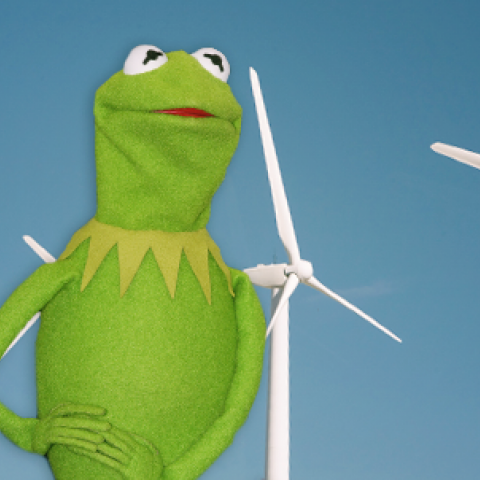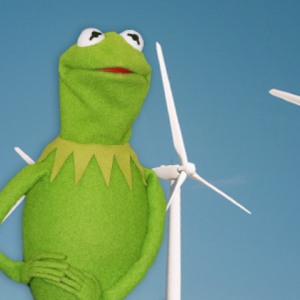
Green with envy: Canada should follow these clean energy leaders
Maybe Kermit the Frog had it all wrong and being green is easy – or at least easier than he thought. But first the scary news on fossil fuels. A new study in Nature warns that a large percentage of the world’s untapped fossil fuel reserves (including almost all of the Canadian oilsands) need to be left in the ground […]
Maybe Kermit the Frog had it all wrong and being green is easy – or at least easier than he thought.
But first the scary news on fossil fuels.
A new study in Nature warns that a large percentage of the world’s untapped fossil fuel reserves (including almost all of the Canadian oilsands) need to be left in the ground in order to prevent global temperatures from rising above 2 C – the environmentally-perilous threshhold that 195 countries (including Canada) committed to avoiding. Environment Canada’s latest report finds us way behind said climate change commitment.
The Nature study isolates the amount – and general location – of the world’s known fossil fuel reserves that must not be exploited to avoid potential environmental disaster:
“Our results suggest that, globally, a third of oil reserves, half of gas reserves and over 80 per cent of current coal reserves should remain unused from 2010 to 2050 in order to meet the target of 2 C.”
But the silver – err, green – lining is that renewable energy is showing increasing economic and political promise – both at home and abroad.
After a five-year growth period, the renewable energy sector in Canada employs more people than the oilsands, according to a December report by Clean Energy Canada. Anchored by investment in Ontario, Quebec and B.C., the report says that clean energy – biomass, wind, solar and hydro – now account for 23,700 jobs, with the oilsands accounting for 22,340.
Given the falling price of oil, and Nature’s pointed concern over fossil fuel development, it’s important to note that some governments are leading the way in clean energy – and providing a “greenprint” for others. For example:
- Denmark is producing a whopping 39% of its electricity from wind (a world record) – three times their overall wind power production from 10 years ago. The country seems well positioned to meet its goal of harnessing 50% of its energy from renewables by 2020. Their long-term goal is to be free of fossil fuels by 2050.
- In December, Germany set their own record for wind-generated power: 8.9 terawatt hours. With more offshore wind farms starting up in 2015, that record is not expected to last long.
- According to RenewableUK, wind generated enough power to provide electricity to 25% of U.K. homes in 2014.
- India’s prime minister just announced a $100 billion new solar investment target to increase its solar energy production to 100,000 megawatts over the next seven years. (Clean energy currently only accounts for 1% of the country’s output.) If they achieve their goal, solar alone would account for 10% of India’s energy mix. Keeping on the sunny side of life seems like a smart move; Reuters points out that India receives approximately twice as much sun as European countries.
- Overall, global solar energy investment rose by 25% last year, and overall international investment in clean energy rose by 16%.
- Even China, the leading global emitter of greenhouse gases, is rapidly becoming a renewable energy leader, according to a recent study in the Asia-Pacific Journal. In 2013, China’s wind, water and solar accounted for 20 per cent of their generated energy – exceeding the combined total electrical output of both Germany and France. More impressively, out of the 100 gigawatts in new capacity China added in 2013, 58% came from renewable sources.
- ThinkProgress points to eight renewable energy success stories in 2014 – including a solar road in Denmark, and a world record-breaking solar car designed in Australia that could soon hit the streets.
As for our home and native land, renewable energy currently provides for about 16.9% of Canada’s total primary energy supply.
Photo: Eva Rinaldi, CC BY-SA 2.0, Reynermedia, CC BY 2.0.
Our journalism is powered by readers like you.
We’re an award-winning non-profit news organization that covers topics like social and economic inequality, big business and labour, and right-wing extremism.
Help us build so we can bring to light stories that don’t get the attention they deserve from Canada’s big corporate media outlets.
Donate



